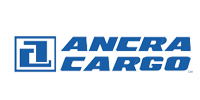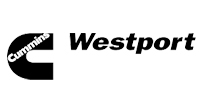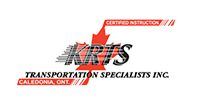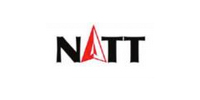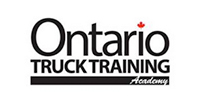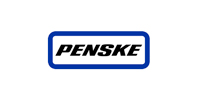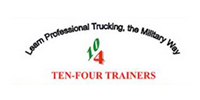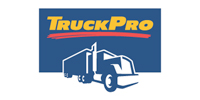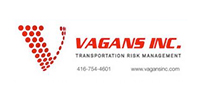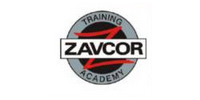The weather’s still warm, the days are long, and your truck is ready to hit the road for a big trip. Or is it? There’s only one way to truly tell if your vehicle’s safe to drive, and that’s with a thorough pre-trip inspection. If you wait for strange noises, glaring problems, or worse – a roadside inspection – you’re flirting with disaster.
Pre-trip inspections can impact everything from fines and points on the carrier profile to delivery delays and increased maintenance costs for roadside repairs. These checks are straightforward and fairly easy for most drivers to conduct – as long as you know what you’re looking for.
How does your preventative maintenance program measure up?
You can’t improve your program if you don’t know where you stand. How often do you perform regular maintenance on each vehicle? Do you periodically conduct in-depth checks? Following a regular preventative maintenance cycle can help keep you on track and in the clear when it comes to legal obligations, fleet efficiency and general safety.
A good maintenance program rests on documentation as much as on repair. Consider the following five-step cycle to keep things running smoothly:
• Conduct a daily inspection.
• Document defects.
• Make repairs.
• Document repairs.
• Schedule and document regular maintenance by a qualified mechanic.
The more thorough your reports, the better you’ll be able to pinpoint recurring problems and control costs. Detailed documentation is also helpful when legal concerns arise or audits are conducted.
Your daily vehicle inspection: patience, care and consistency
How long should a pre-trip inspection take? There’s no right answer, but be prepared to put aside at least half an hour. It can be tempting to limit the check to 15 minutes, but rushing through it can lead to a massive waste of time and money: you’re more likely to miss important defects, and if an inspector finds those CVSA violations, you could be fined or have your vehicle taken off the road.
Stay safe – and on the inspector’s good side – by keeping some general tips in mind:
Consider all angles. An effective pre-trip inspection comes down to perspective: a truck has many surfaces and components, and the only way to tell if something’s wrong in any area is to get up close and personal.
As you approach the vehicle, begin your circle check: at 30 feet away, start to look for any leaks, puddles or odd leans to the suspension, which may indicate a broken spring. Next, perform a cold check under the hood, and then a warm check to locate any leaks or loose components.
Once you close the hood, check for damage, operating lights and a valid licence sticker. Move along the passenger side, around the back, and back up the driver’s side to inspect all components – don’t forget the in-cab inspection and document check.
Favour your brakes. Your truck brakes work hard, and they need to continue to do so. Problems with brakes are high on the list of common roadside inspection violations, and since they’re subject to so much wear and tear, you’ll want to check all parts of your braking system. Make sure the brake chamber airlines are secure, check for chaffing, test the brake lights and listen for air leaks. Brake indicators are a great way to tell if the brakes are out of adjustment, but the only true way to check brake stroke is to use the mark and measure method.
Complete a brake test with both the hand valve and the foot valve before starting your trip. Release the brakes, and then apply the foot valve firmly six times to help adjust the auto slack adjustors.
Keep it clean. A messy truck can do more harm than you might imagine. Every picture tells a story, so consider what a cluttered cab could say to a roadside inspector: perhaps you’re not that concerned about keeping a clean safety record, either?
Aside from making a poor first impression, a heap of junk on your dashboard can interfere with your sightline, and turn into projectiles if you were to react suddenly while driving. Moreover, allowing dirt to build up on lights, reflectors and reflective strips can drastically reduce the visibility of your truck, especially at night. Clean well, and clean often.
A daily vehicle inspection is too important to be conducted arbitrarily; operators must inspect the truck and trailer before the start of each and every shift. Keep in mind that a daily inspection is good for only 24 hours, and be sure to have the driver sign the inspection report right away – this way, it will quickly become a habit.
Minor versus major defects: know the difference
Why the distinction? Some defects will require repairs at your earliest convenience, while others will render the truck unsafe from the moment you discover the problem. It’s an important difference that can make or break your operations.
NSC Standard 13 is the form that’s used to identify major and minor defects, and a copy must always be carried in the vehicle. Minor defects will need to be recorded and reported to the operator, and repairs should be made as soon as possible. Major defects affect the safe operation of the vehicle: they must be immediately reported to the company, and the truck will remain out of service until the repairs are completed.
Once the inspection report is finished, the driver should keep it close at hand. Not only is this record a useful reference, it must also be provided to regulatory officials when requested. If you’re ready to improve your pre-trip inspection routine, visit nbins.com/pmc-risk to learn how our Risk Services team can help with both practical training and theory-based learning.
About the Author:
This month’s expert is David Goruk, Risk Services Specialist, Transportation & Logistics. David has served the trucking industry for over 30 years as a driver, driver trainer, and in loss control and risk management services.
Northbridge Insurance is a leading Canadian commercial insurer with a long-standing history in the marketplace and has been serving the trucking industry for more than 60 years. This article is provided for information only and is not a substitute for professional advice. We make no representations or warranties regarding the accuracy or completeness of the information and will not be responsible for any loss arising out of reliance on the information. Northbridge Insurance and Northbridge Insurance Logo are trademarks of Northbridge Financial Corporation, used under licence.



